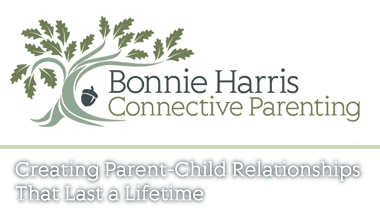 When my daughter Molly was five, I was exhausted and drained everyday. I couldn’t see a way out of our daily power struggles. She was pushing all my buttons, and I was reacting with hostility. But it was the mental notes playing in my head that got me the most. I was worried we would fight always. Fortunately I was wrong.
When my daughter Molly was five, I was exhausted and drained everyday. I couldn’t see a way out of our daily power struggles. She was pushing all my buttons, and I was reacting with hostility. But it was the mental notes playing in my head that got me the most. I was worried we would fight always. Fortunately I was wrong.
One morning, the same whiny, grumpy face approached with that ever-present protruding lower lip—but something was different. Every other morning when I saw this face, I thought to myself, “She’s out to get me. She’s doing this on purpose to make me mad.”
This particular morning it occurred to me, “Wait a minute, she’s not out to get me. She’s miserable.” Suddenly I saw her differently. Instead of a resistant, defiant—okay I’ll say it—brat, I saw a very upset little girl who didn’t want to leave me to go off to school. I was battling her, and she was anticipating the battle. She got up every school morning dreading what was coming and preparing for our skirmishes. She had no idea how to tell me any other way than, “I don’t want to go to school,” and all I could think was how annoying she was being.
My shift in perception—she wasn’t being a problem, she was having a problem—changed our relationship forever. My emotions switched from anger to compassion. Once I made that switch, I didn’t have to fight her anymore. We never had another power struggle—because I chose not to engage.
The Power Struggle
A power struggle is a fight to the finish when you and your child are both out to win. Most parents believe they are right because, after all, they’re the parent. But consider this, if you win, your child must lose. It’s your fear that fuels your need to win. Your child shows defiance, and you think, I’m a terrible parent and my child will be a terrible person. However, in the moment of the defiance, you do have a choice even if you feel trapped. You can fight back or not.
There is no power struggle if you choose not to engage. Here are some tips to keep in mind.
The Don’ts:
• Don’t try to reason with an upset child. Rational thought is impossible when the system is stressed.
• Don’t resist resistance.
• Don’t punish, threaten or coerce.
• Don’t give in or try to fix it. If you feel responsible for your child’s feelings, you will try to make him happy (which is not within your power), you will inevitably lose, and then you’ll feel like a failure.
• Don’t take it personally. It’s not about you. Your child is expressing upset in the only way he knows how right now.
• Don’t ask questions.
• Don’t worry, jump to conclusions or catastrophize into the future.
Here’s what to Do instead:
• Detach. This is your child’s problem, not yours.
• Observe and listen. Allow your child’s feelings to come out until they dissipate.
• Maintain a “holding” attitude. See the hurt she is feeling and empathize. Remember she’s having a problem.
• Hold her as soon as she will let you.
• Acknowledge feelings and intention. “You really don’t want to go to school today. I bet you wish you could stay home and play with me.”
• Allow in fantasy what can’t happen in reality. “Wouldn’t it be fun if you had a magic wand. What would you like to change?”
• Honor desires. “Of course you’d like that. I’m not going to get that for you, but how do you think you could make that happen?”
• Offer a choice. “Do you want to put your clothes on or would you like me to today?” “You don’t have a choice about going to school but you do have a choice about how you feel about it. You can be grumpy or you can be open to what happens. It’s your choice.”
• Be an intentional parent. Plan, anticipate, give warnings, set predictable expectations and be firm and clear with limits.
When your child feels accepted for his desires and his angry feelings, he is more likely to cooperate even when he can’t have what he wants. His resistance is telling you that he doesn’t like being pushed around. Don’t try to change him but do let him know that you understand his point of view, even when he has to do it your way. Attempting to stop the child’s behavior with a power struggle shows disrespect for the child’s intention and asks the child to be the grown-up first.








One thought on “The Dos and Don’ts of Power Struggles”
Comments are closed.